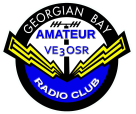2021-04-10, 07:22:09
We have to keep in mind that our licenses are a privilege that could be taken away at any time, and our spectrum is constantly under challenge from commercial interests. If we don't pay attention to community service and act on it we are putting our licenses and our spectrum at risk. There was a sinister warning from the FCC back in January that hams should not use their equipment for illegal purposes. It may have been linked to the Capitol Hill riots. We should treat that message as a warning shot across our bow.
I started this thread because I believe the traditional ARES model of tactical comms is outdated. Dave is right about Welfare comms but Marvin's idea of community networks is where we can proactively assert the value of ham radio. It can be as simple as letting our neighbours know that we have the capability of local and international communications in the event of an emergency.
I recall an earthquake in Italy a few years ago when hams setup a dedicated 24 hr station on 20m to allow family members outside the disaster zone to check on family members.
It might be argued that propagation conditions don't always allow international comms but that is where the National Traffic System is most useful. We can send a Radiogram locally and it will be relayed to anywhere in the world that allows external traffic (most countries participate). I plan to promote the use of Radiograms within the club very soon.
Hams may not express an interest in ARES when polled, as Adam observed, because of the outdated ARES model. But, if ARES were to be re-invented along the lines suggested and hams could see how they can participate using any QSO mode (i.e. not FT8) that will change.
I have personally sent and received Radiograms using CW and PSK and have seen how a large network of dedicated traffic handlers and a scheduled series of daily traffic nets can speed traffic around the globe quickly and efficiently. Any ham can be an entry point to the NTS using nothing more complex than an HT.
I started this thread because I believe the traditional ARES model of tactical comms is outdated. Dave is right about Welfare comms but Marvin's idea of community networks is where we can proactively assert the value of ham radio. It can be as simple as letting our neighbours know that we have the capability of local and international communications in the event of an emergency.
I recall an earthquake in Italy a few years ago when hams setup a dedicated 24 hr station on 20m to allow family members outside the disaster zone to check on family members.
It might be argued that propagation conditions don't always allow international comms but that is where the National Traffic System is most useful. We can send a Radiogram locally and it will be relayed to anywhere in the world that allows external traffic (most countries participate). I plan to promote the use of Radiograms within the club very soon.
Hams may not express an interest in ARES when polled, as Adam observed, because of the outdated ARES model. But, if ARES were to be re-invented along the lines suggested and hams could see how they can participate using any QSO mode (i.e. not FT8) that will change.
I have personally sent and received Radiograms using CW and PSK and have seen how a large network of dedicated traffic handlers and a scheduled series of daily traffic nets can speed traffic around the globe quickly and efficiently. Any ham can be an entry point to the NTS using nothing more complex than an HT.
John VA3KOT
Blog: HamRadioOutsideTheBox.ca
Blog: HamRadioOutsideTheBox.ca




